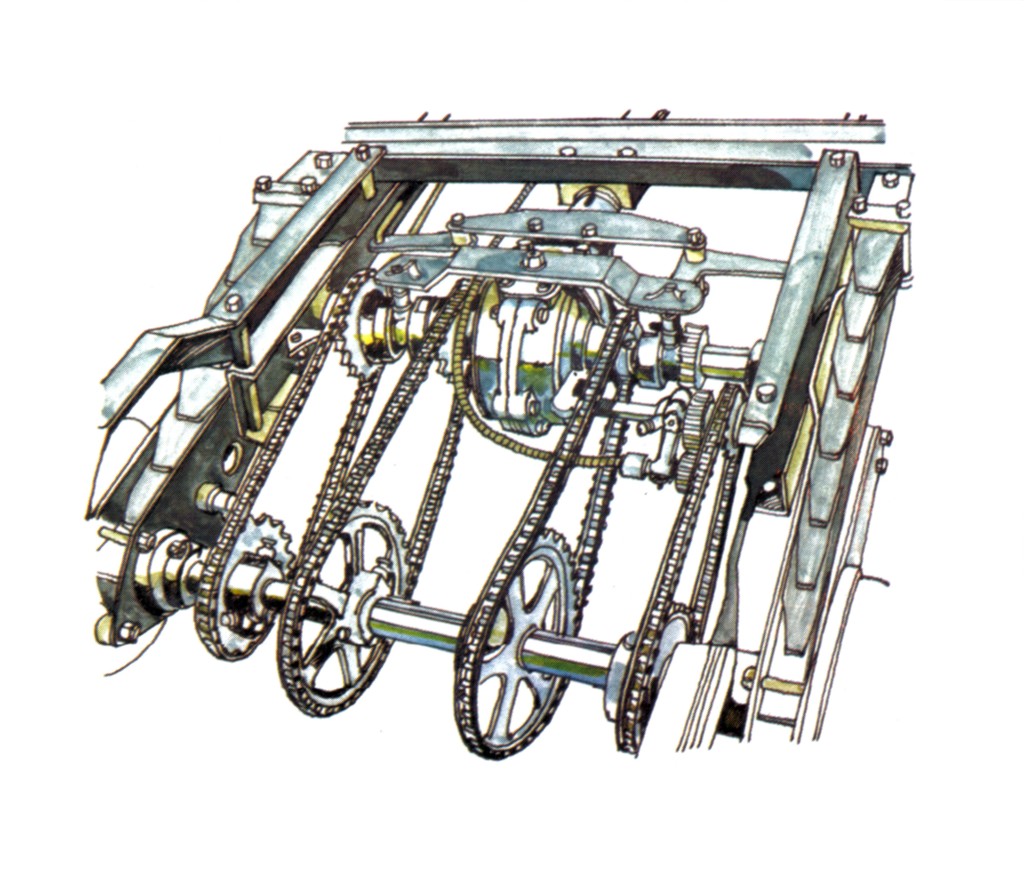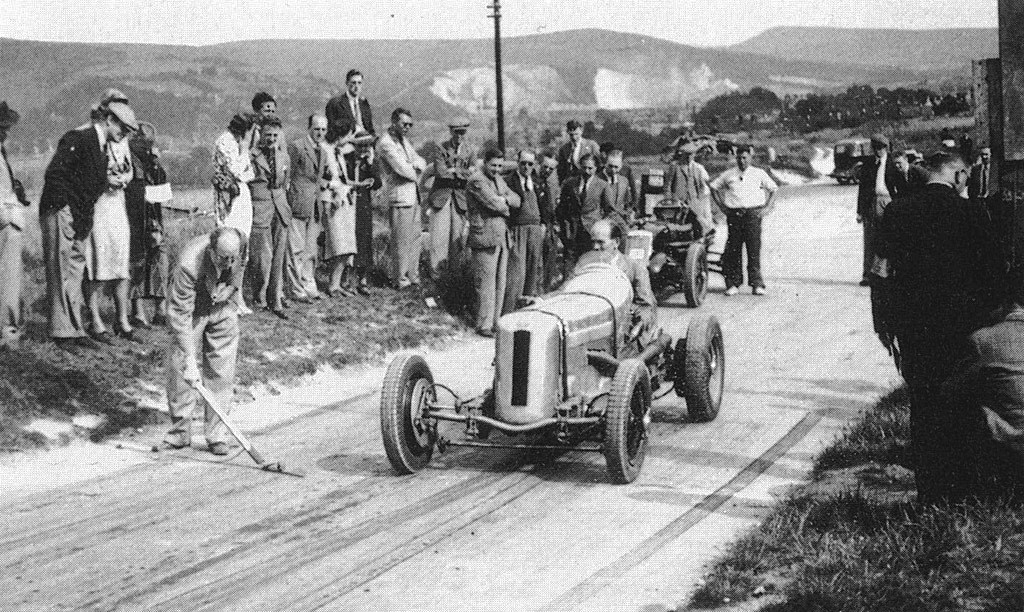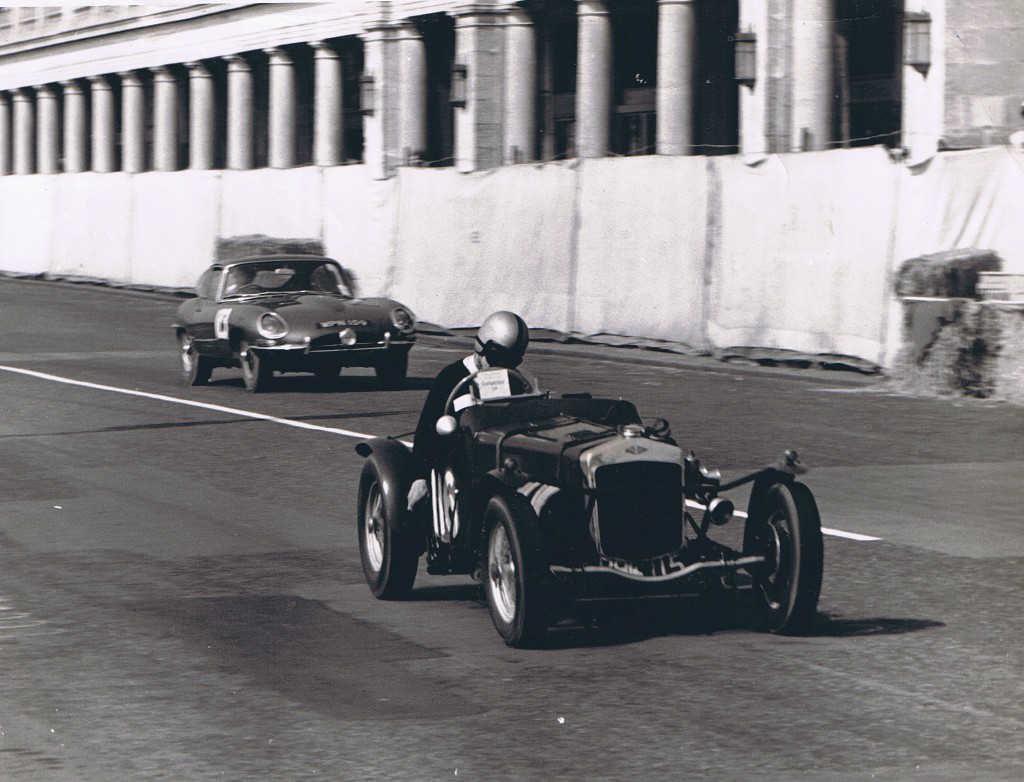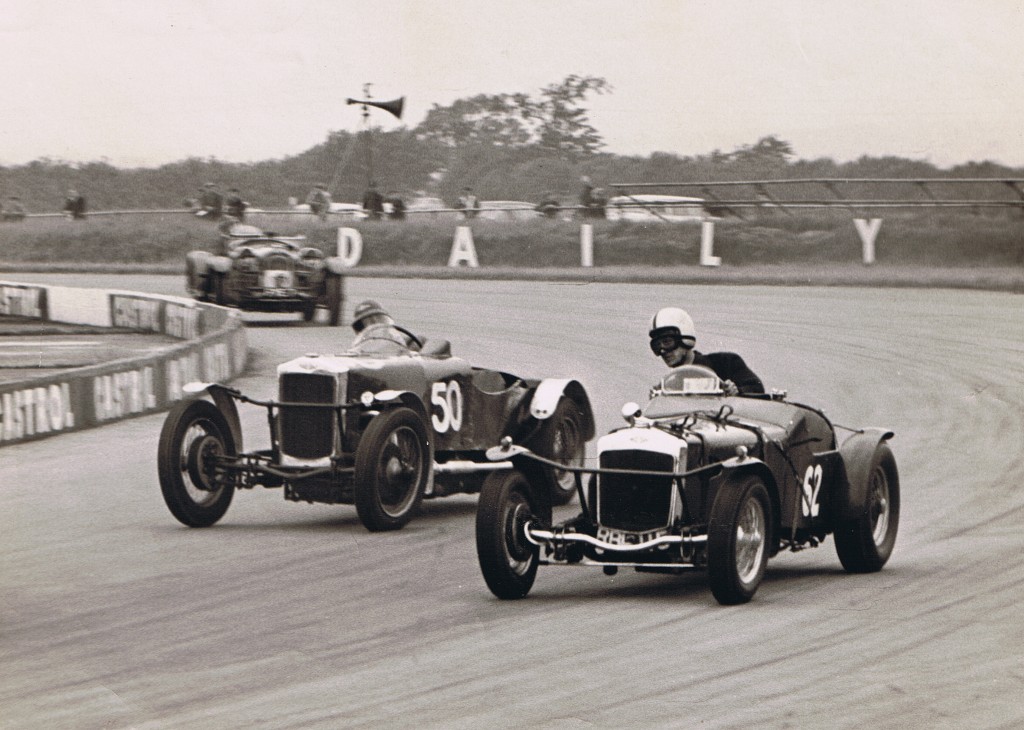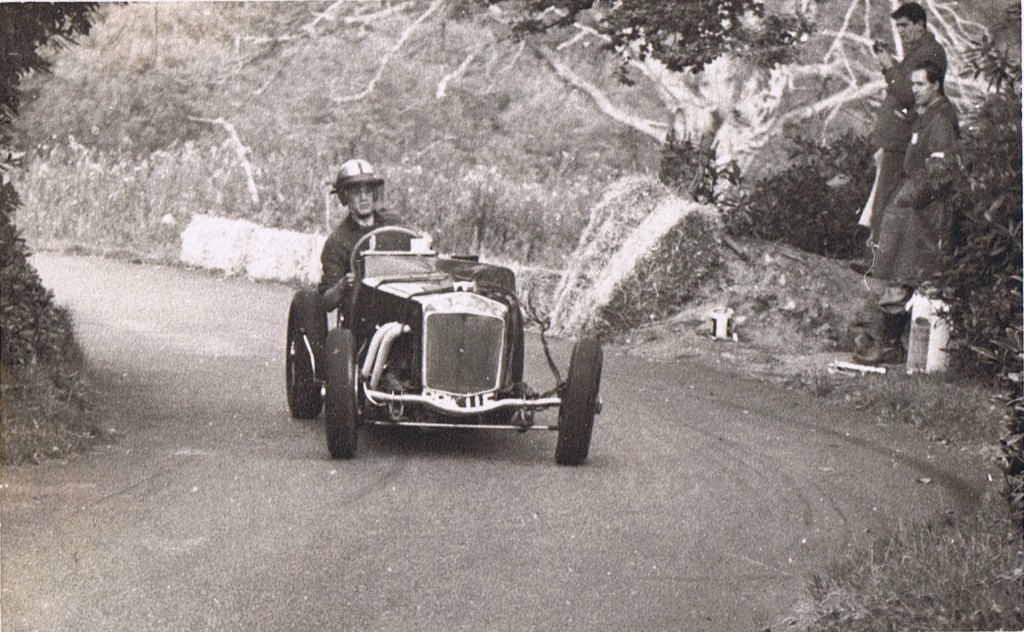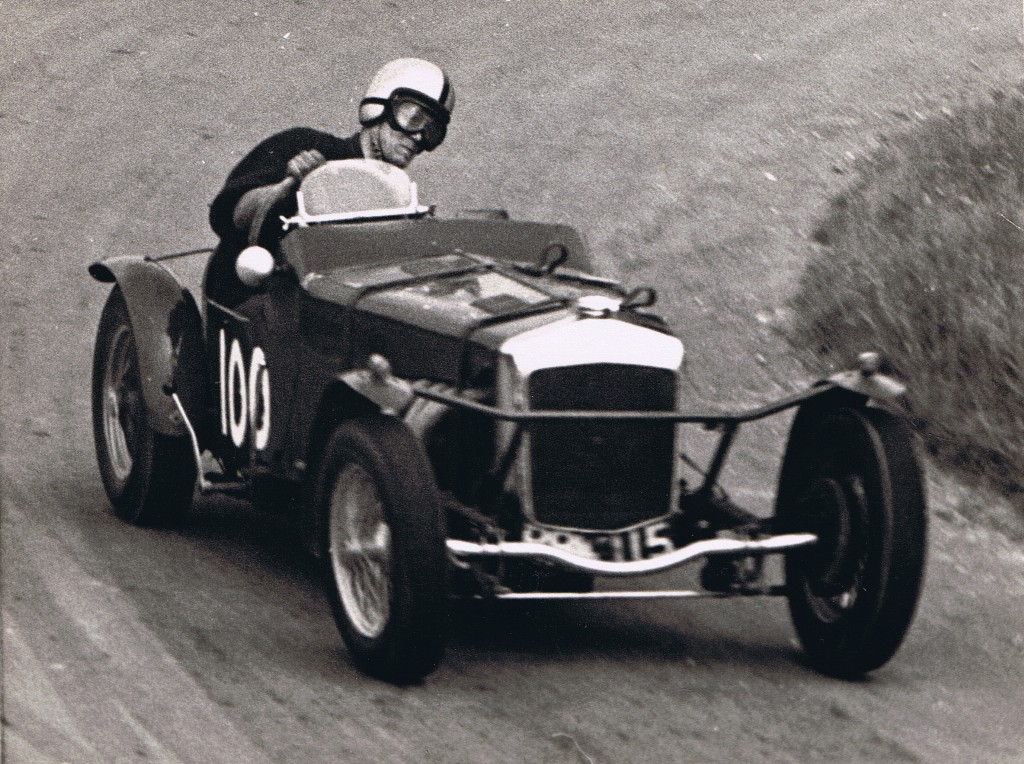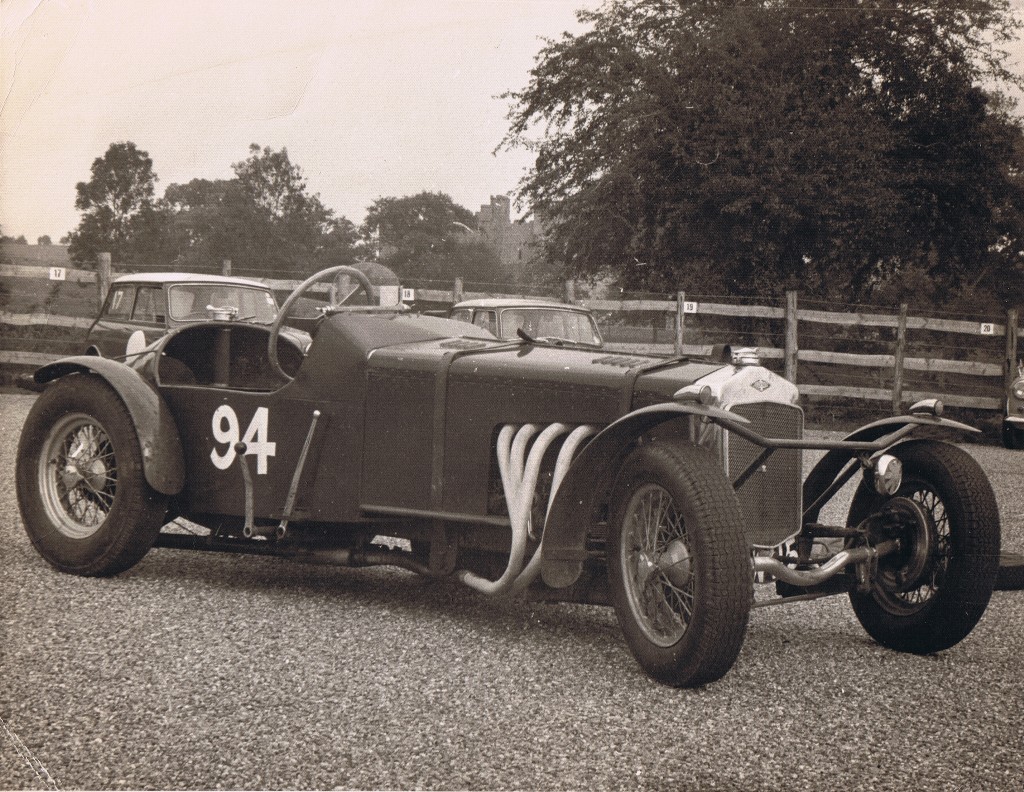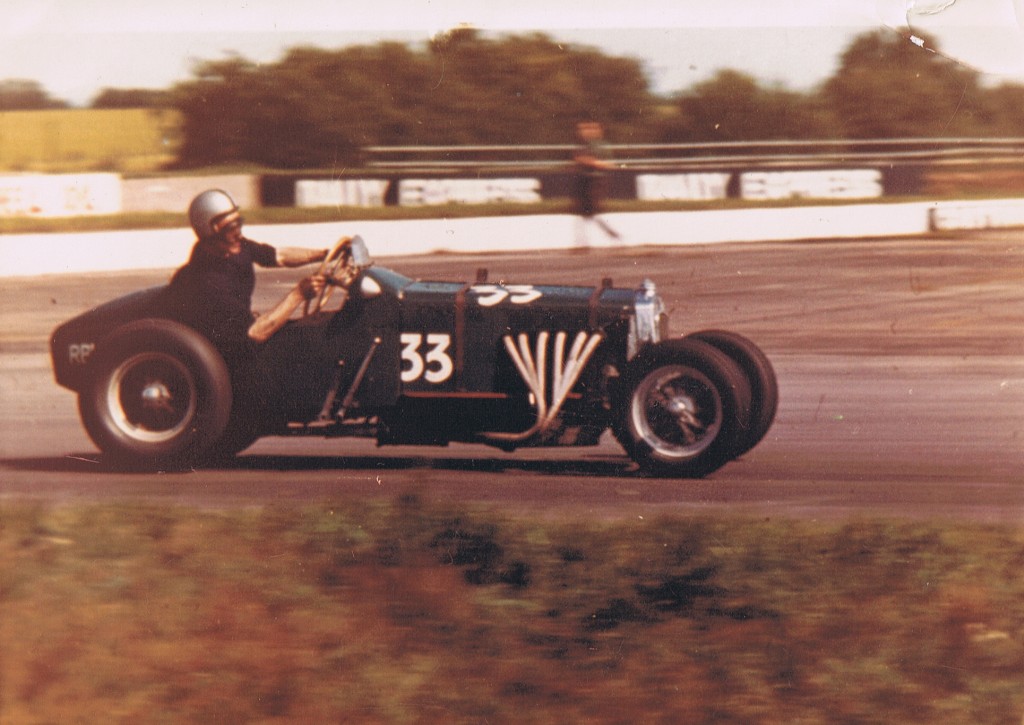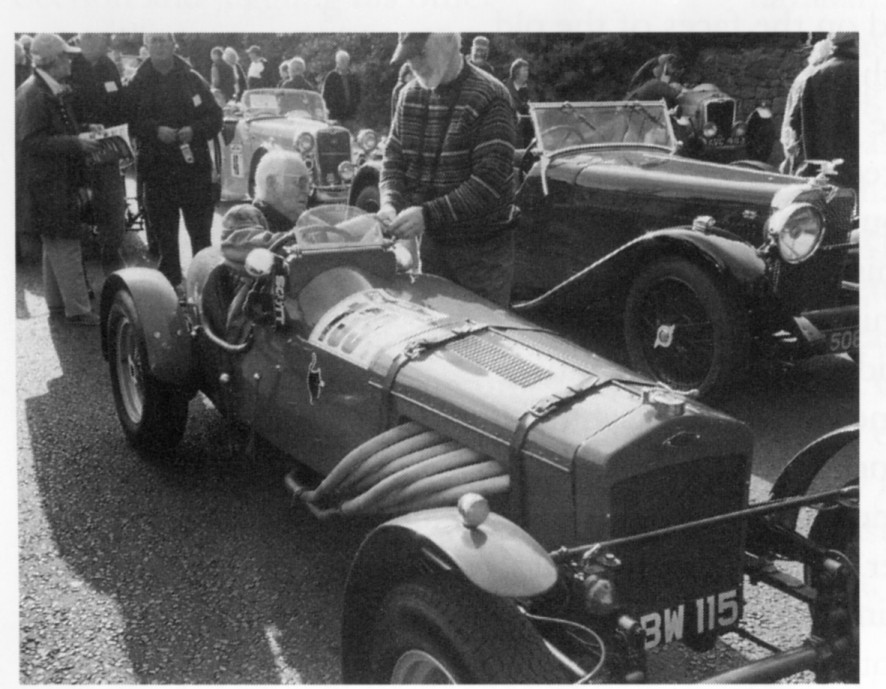Peter Giddings Racing
FRAZER NASH UNION SPECIALRon Godfrey and Archie Frazer-Nash founded GN Cycle Cars about 1909 in Hendon/Wandsworth, England. The cars used 1100 cc JAP V-twin motorcycle engines. The unique feature of the GN was the use of chain drive rather than shaft drive. The cars were further developed, but the introduction of cars like the Austin Seven outclassed the cheap cycle cars. GN went into receivership in 1920 and production ceased in 1922 when Frazer-Nash left the company. After the collapse of GN, the Frazer-Nash company was founded by Archie Frazer-Nash and F. N Pickett, an entrepreneur who made his fortune in war surplus salvage. The Frazer Nash company was at Kingston-on-Thames, but later moved to Isleworth in Middlesex. The Frazer Nash cars followed the mode of the GN cars in using chain and sprocket gearing selected by dog-clutches. There was a solid rear axle with no differential, suspended by quarter-elliptic springs. These “chain-gang” Frazer Nash cars were crude and light weight but offered performance equal to that of much more expensive sports cars. The solid rear axle was very stable even under difficult conditions and the chain-drive clutch setup gave very quick gear changes. Power was initially by Power-Plus 1.5 liter engines and then by British Anzani side-valve engines. Based on the team cars built for the 1931 Tourist Trophy race, the TT Replica was the most significant series of the chain-gang Frazer Nash models. The cars were more or less built to order, individual cars had significant variations. The general specification cars had overhead cam four-cylinder engines with bore of 69 mm and stroke of 100 mm giving 1496 cc. A steel channel frame carried steel panel bodywork. The four-speed chain and dog transmission was used. Suspension was by quarter elliptic leaf springs. Cable operated drum brakes were used on all four wheels. About 90 of the TT Replica models were built from 1931 to 1938. Richard “Dick” Nash (R G J Nash) was a racing driver and builder of racing specials in the 1930s. He was no relation to Archie Frazer Nash. Dick Nash built a series of Frazer Nash specials that were particularly successful in hill climbs. He set records at such venues as Lewes Speed Trials and Brooklands in his Frazer Nash specials with names such as “THE TERROR” and “THE SPOOK“. Dick Nash’s Frazer Nash UNION SPECIAL was a further development of his racing specials. This special was developed from a 1928 Frazer Nash and was very successful, on May 9, 1935, RGJ Nash won the hill climb at Lewes, Sussex, England with a time of 19.06 seconds, which stood for several years. During World War II, the UNION SPECIAL was put into storage and seriously damaged during the bombing raids. Geoffrey St. John acquired the remains of the UNION SPECIAL and further developed it. Geoffrey St. John says: “ I built the UNION SPECIAL from parts I obtained from Ron Truscott of Sussex, a well-known Frazer Nash driver of the 1950s. Chassis and details were from R G J Nash’s UNION SPECIAL. The rear axle was ex Emeryson Special bought from Kenneth Neve (President of VSCC). Initially I used the best one of several “Atalanta” Gough engines of either 1 ½ or 2 liters. I began working on the rebuild about 1955 and finished it about 1959. Finally, I fitted a vintage two liter AC engine.” The AC six-cylinder overhead cam engine was designed by John Weller, and displaced 1991 cc and could be persuaded to produce about 115 bhp. In the UNION SPECIAL, which weighed in at about 1000 pounds total, the result was neck-snapping performance. In 1959 Peter Giddings began his racing adventures in the Frazer Nash UNION SPECIAL. This car cost around U.S. $500, and gave a great account of itself at circuits and hillclimbs such as Silverstone, Brands Hatch, Goodwood, Crystal Palace, Oulton Park, Firle, Bodiam, and Wiscombe. The Frazer Nash delivered amazing performance for a two liter. It was driven to events in all kinds of weather, as the Frazer Nash was Peter’s only means of transportation at that time. After Peter’s ownership, the UNION SPECIAL went to Ireland and was severely crashed. It was later rebuilt extensively and returned back to the UK. Throughout its history, it has been registered as RBW 115. The Lewes Speed Trials were held from 1924 until 1939. According to Autocar, "The course bends slightly to the left, is one-third of a mile long, narrow, none too smooth, and slightly uphill. It leads directly off the London-Newhaven road just before reaching Lewes." It is not known if this is the same course used for the Firle hill climb which is described as being near the village of Selmeston, off the A27, near Lewes.. Both courses are described as being about 600 yards long up a grade. Note that Peter Giddings raced the UNION SPECIAL at the Firle hill climb after he acquired it. (Thanks to Geoffrey St. John for his memories and contribution to this history).
The Frazer Nash Chain Drive
Dick Nash drives the Union Special at the 1939 Lewes Speed Trials
Peter Giddings in the Union Special at Brighton. Photo by Guy Griffiths.
Peter in the Union Special at Copse, Silverstone. Photo by Harold Barker.
Peter and the Union Special at Wiscombe.
Peter turns in at the Firle Hill Climb.
The Union Special in the paddock at Bodiam.
Peter in the Union Special at Silverstone.
Harvey McWhir in the revised Union Special.
|
